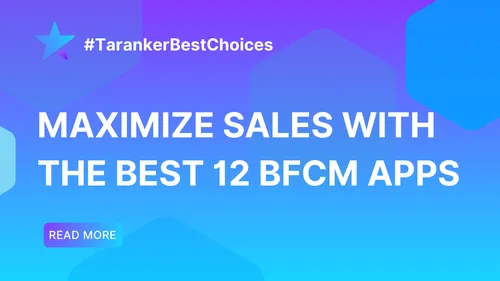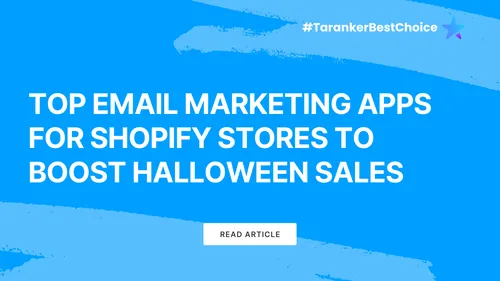Print-on-Demand (POD) businesses are increasingly facing challenges due to fluctuating U.S. tariff regulations. These changes can significantly impact shipping costs and, consequently, profit margins. For many POD sellers, staying profitable in this ever-evolving landscape requires strategic planning and comprehensive understanding of the factors at play. This blog post explores valuable strategies and insights to help maintain shipping profits amidst these tariff adjustments, while adhering to the principles of E-E-A-T.
Understanding the dynamics of U.S. tariffs, including recent updates, allows businesses to navigate the complexities of international trade more effectively. By incorporating experience and insights from industry professionals, we will delve into practical methods to combat rising shipping expenses. From optimizing supply chains to leveraging technology, readers will be equipped with actionable steps to safeguard their profit margins.
- Optimize shipping routes to reduce costs and time.
- Negotiate better terms with suppliers to mitigate tariff impacts.
- Use technology to anticipate changes and adjust strategies accordingly.
The goal is to empower POD entrepreneurs not only to survive but thrive, despite the challenges posed by shifting tariff policies. As we dissect these strategies, keep in mind the importance of continuous learning and adaptation, which are essential to maintaining a competitive edge in the global market.
Understanding Recent U.S. Tariff Changes
The landscape of U.S. tariffs has been evolving, posing both challenges and opportunities for Print-on-Demand (POD) sellers. Staying informed is crucial for maintaining profitability amidst these changes. Recent updates in U.S. trade policies have impacted import/export duties, necessitating that POD businesses adapt quickly.

According to the United States Trade Representative (USTR), there have been strategic tariff adjustments aimed at protecting domestic industries while fostering international trade relations. Key changes include adjustments in rates for certain consumer goods and modifications in trade agreements.
- Monitor tariff schedules regularly via trusted government sources like the USTR.
- Consider diversifying your supply chain to mitigate risks related to tariff fluctuations.
- Engage with trade experts to understand the impact on your product categories.
Staying proactive by seeking expert insights and leveraging available resources ensures that your POD business remains profitable despite the dynamic tariff landscape.
Assessing the Impact on Shipping Costs
To navigate the evolving landscape of U.S. tariffs, Print-on-Demand (POD) sellers must understand the nuanced effects on shipping costs. Recent tariff changes have led to varying impacts on import duties and transportation expenses. Identifying these changes is crucial for maintaining profitability.

- According to the U.S. Census Bureau, changes in tariffs can induce shifts in shipping fees, particularly for goods imported from regions heavily affected by new tariffs.
- Case studies, such as those found in Trade.gov reports, highlight POD sellers who have adjusted their pricing strategies to offset increased costs.
- Industry analyses suggest that employing diversified suppliers can mitigate sudden cost spikes - Forbes recommends strengthening relationships with local and international partners.
Understanding these factors empowers POD businesses to strategically adjust and remain competitive, embracing complexities while focusing on sustainability and growth.
Strategies to Mitigate Rising Shipping Costs
Shipping expenses continue to challenge print-on-demand (POD) sellers amidst recent U.S. tariff changes. By adopting certain strategies, POD businesses can navigate these rising costs effectively. Diversifying suppliers is crucial; sourcing from multiple vendors can shield against price hikes and reliance on single sources, enhancing supply chain resilience. According to a Forbes article, optimizing logistics, such as choosing the most efficient shipping options and partnering with reliable carriers, is essential.

Moreover, leveraging technology for efficiency can offer significant benefits. Implementing advanced inventory management systems and utilizing data analytics for demand forecasting can reduce overhead costs. Logistics experts from Harvard Business Review highlight the importance of these technologies in streamlining operations and cutting costs. By focusing on these actionable strategies, POD sellers can protect their profit margins despite external economic pressures.
Leveraging Technology for Cost Management
In an era where U.S. tariff changes create unpredictable financial strain, Print-on-Demand (POD) sellers must effectively manage shipping expenses to sustain profit margins. Modern technology provides valuable resources in this endeavor. AI forecasting tools, for instance, predict shipping costs by analyzing historical data trends, enabling sellers to make informed pricing decisions. For instance, companies like IBM have developed AI solutions that optimize supply chain operations.

Additionally, blockchain technology offers transparent and secure supply chain management. By maintaining an immutable ledger of transactions, it reduces fraud and improves cost efficiency. Reputable sources such as Forbes have highlighted its growing adoption in logistics. These technologies not only aid in minimizing expenses but also foster trust and efficiency across the supply chain.
- Consider investing in AI-driven software that forecasts logistical costs accurately.
- Explore blockchain platforms like OriginStamp for transparent supply chain tracking.
- Stay updated with industry developments to adapt swiftly to tariff changes.
Navigating Legal and Compliance Challenges
The landscape of U.S. import tariffs is shifting, presenting Print on Demand (POD) sellers with new legal and compliance challenges. It is essential for these businesses to grasp the nuances of the current tariffs to maintain their profit margins. Staying informed about the latest regulations and compliance requirements can be a daunting task. However, by referring to legal advice columns or government resources, such as Trade.gov, POD sellers can navigate these changes confidently.

Here are some key considerations for ensuring compliance while keeping shipping profits high:
- Regularly check updates on the U.S. Trade Representative's official website for the latest tariff information.
- Consult with legal experts specializing in international trade law to understand specific impacts on your products.
- Incorporate automated software to streamline tariff calculation and avoid unexpected costs.
By adhering to these strategies, POD sellers can effectively manage legal risks while maintaining a competitive edge in the market.
In conclusion, while U.S. tariff changes pose challenges for POD sellers, strategic management and informed decision-making can help maintain profitability in shipping. By understanding regulatory environments, utilizing technology, and optimizing operations, businesses can offset additional costs and continue thriving. Staying informed through credible sources like trade publications and government announcements is critical for navigating these ever-evolving landscapes.
Adapting to tariff changes requires a proactive approach:
- Analyze Costs: Regularly review and understand your cost structures to adjust pricing strategies accordingly. For comprehensive insights, refer to resources such as the International Trade Administration.
- Embrace Technology: Implement tools that can streamline operations and reduce costs, like automated inventory management systems.
- Optimize Supply Chain: Work closely with suppliers and logistics partners to find the most cost-effective shipping routes and methods.
- Monitor Policy Changes: Keep abreast of tariff updates via trusted sources like Reuters or The Wall Street Journal.
By adopting these strategies, POD sellers can navigate tariff-related challenges effectively. Now is the time to implement these practices, ensuring your business not only survives but thrives in a competitive market. Stay informed and strategic to keep profitability high despite tariff tumult.













